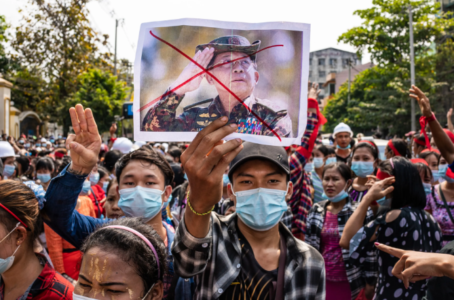Beijing’s efforts to mediate in Myanmar have hit limits, highlighting the need for ASEAN’s involvement.
MYANMAR: China has emerged as a key player in Myanmar’s political crisis, brokering a ceasefire in January among warring factions. Despite these efforts, sporadic fighting continues, underscoring Beijing’s limitations and the need for greater collaboration with the Association of Southeast Asian Nations (ASEAN).
Experts argue that a coordinated approach between China and ASEAN, particularly involving Thailand due to its close ties with Myanmar and shared border, could yield better results in advancing peace.
“If China wants to bring peace to the region, it needs to get other stakeholders including ASEAN on board, rather than acting unilaterally,” said Dr. Brian Wong from the University of Hong Kong’s Centre on Contemporary China and the World. He noted the historical ties between Myanmar’s military, the Tatmadaw, and Thailand’s armed forces as a critical factor.
ASEAN’s Struggles to Mediate
Since Myanmar’s military seized power in a coup over three years ago, ASEAN has sought to mediate the crisis through its Five-Point Consensus peace plan. The plan includes commitments to cease violence, foster constructive dialogue, and provide humanitarian aid.
However, the junta’s refusal to implement the consensus has stalled progress. There are signs of change under Thailand’s new Prime Minister Srettha Thavisin, who appears more willing to take an active and neutral role in mediation efforts, offering hope for a reinvigorated ASEAN approach.
Beijing’s Role and Challenges
China has connections with all major players in Myanmar, including the junta, ethnic armies, and the National Unity Government. In January, Beijing brokered a ceasefire after violence spilled over into its Yunnan province, injuring civilians.
Observers say Beijing is in a unique position to mediate due to its influence and strategic interests, including protecting its investments and preventing external powers from exploiting a potential power vacuum.
“China’s mediation in Myanmar is not just about protecting its economic interests, it’s also a strategic necessity,” said Mr. Amara Thiha from the Peace Research Institute Oslo.
Yet, Beijing’s mediation efforts have not prevented escalating violence. Recently, China conducted air defense and live-fire drills near the Myanmar border, signaling its concern over the instability.
A Collaborative Path Forward
Experts emphasize that China cannot resolve the crisis alone and needs ASEAN’s cooperation for a sustainable solution. Beijing has avoided explicitly taking sides, instead positioning itself as a neutral mediator.
“China seeks the least friction possible to maintain stability in Myanmar,” said Dr. Digby James Wren of Cambodia’s International Relations Institute. “However, its support for the Myanmar government has diminished compared to the past.”
As Myanmar’s crisis deepens, the collaboration between China and ASEAN will be pivotal in shaping the country’s future and ensuring regional stability.








